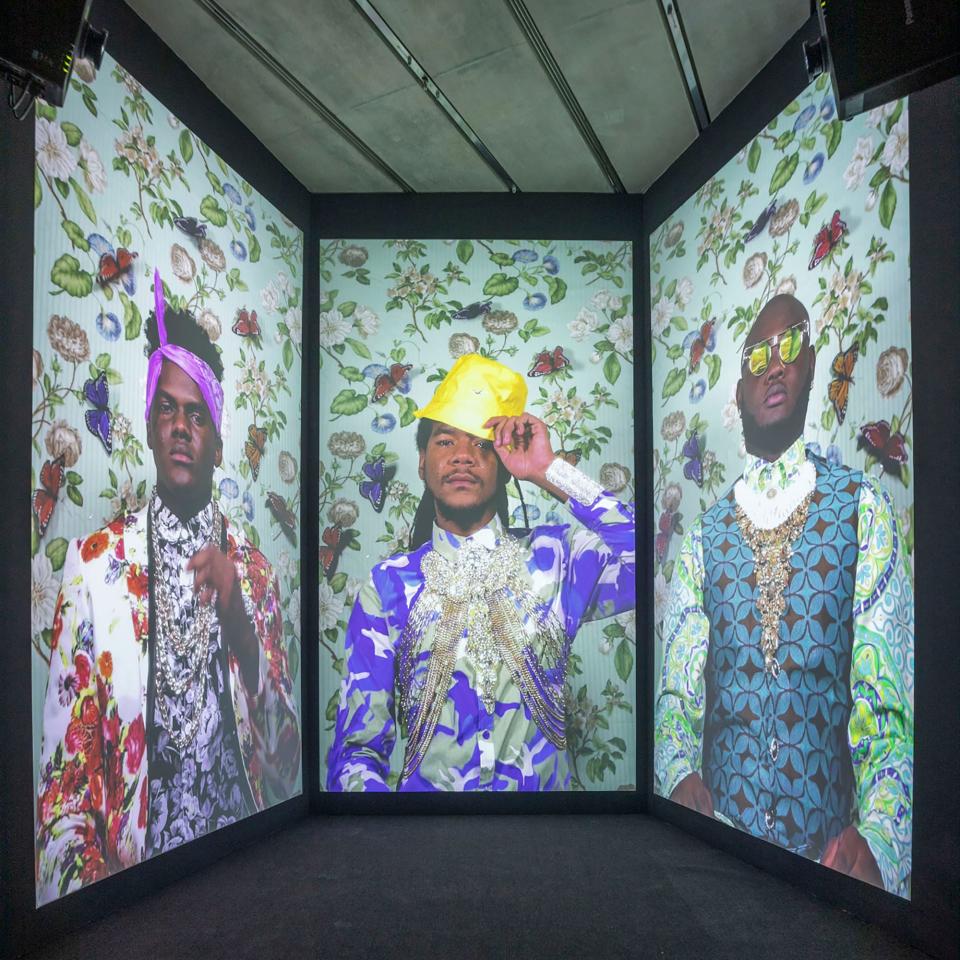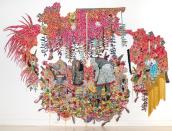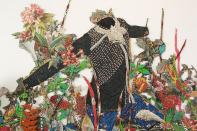In the Lush Landscape of Ebony G. Patterson’s New Exhibition, Fashion Plays a Powerful Role
Walk through “While the Dew Is Still on the Roses,” Ebony G. Patterson’s new solo show at the Pérez Art Museum in Miami, and it’s easy to be lulled into a false sense of security. At first glance, the scene appears like a serene moonlit garden. A magical, pearl-encrusted tapestry lies at your feet sprigged with crochet flowers, like pink peonies in full bloom; appliqué banana leaves dusted with glitter are plastered on the walls; bunches of red, orange, and white carnations form the colorful topiary-style sculptures dotted around the space.
But don’t be fooled: This is no earthly paradise. Something ominous lurks in the bushes. Entangled in the lush flora and fauna of her work, discarded pieces of clothing suggest a missing person’s report. A ghostly, frosted glass sneaker is nestled in a bed of flowers. And wait—is that a headless body lying in the grass? Dismembered black and brown hands and feet? Then it dawns on you: A dark spirit blights this enchanted place. Dangling from the ceiling like a murderous flock of vultures circling an open grave are hundreds of women’s shoes, dipped in sparkling black paint.

Though Patterson’s work seems to be teeming with life on the surface, her art confronts death head-on, specifically the untimely deaths of black and brown people. Her seductive multimedia pieces are designed to pry open the thorniest conversations around race and social injustice that continue to plague our society. And in this highly fraught tableau, fashion and style play an important role.
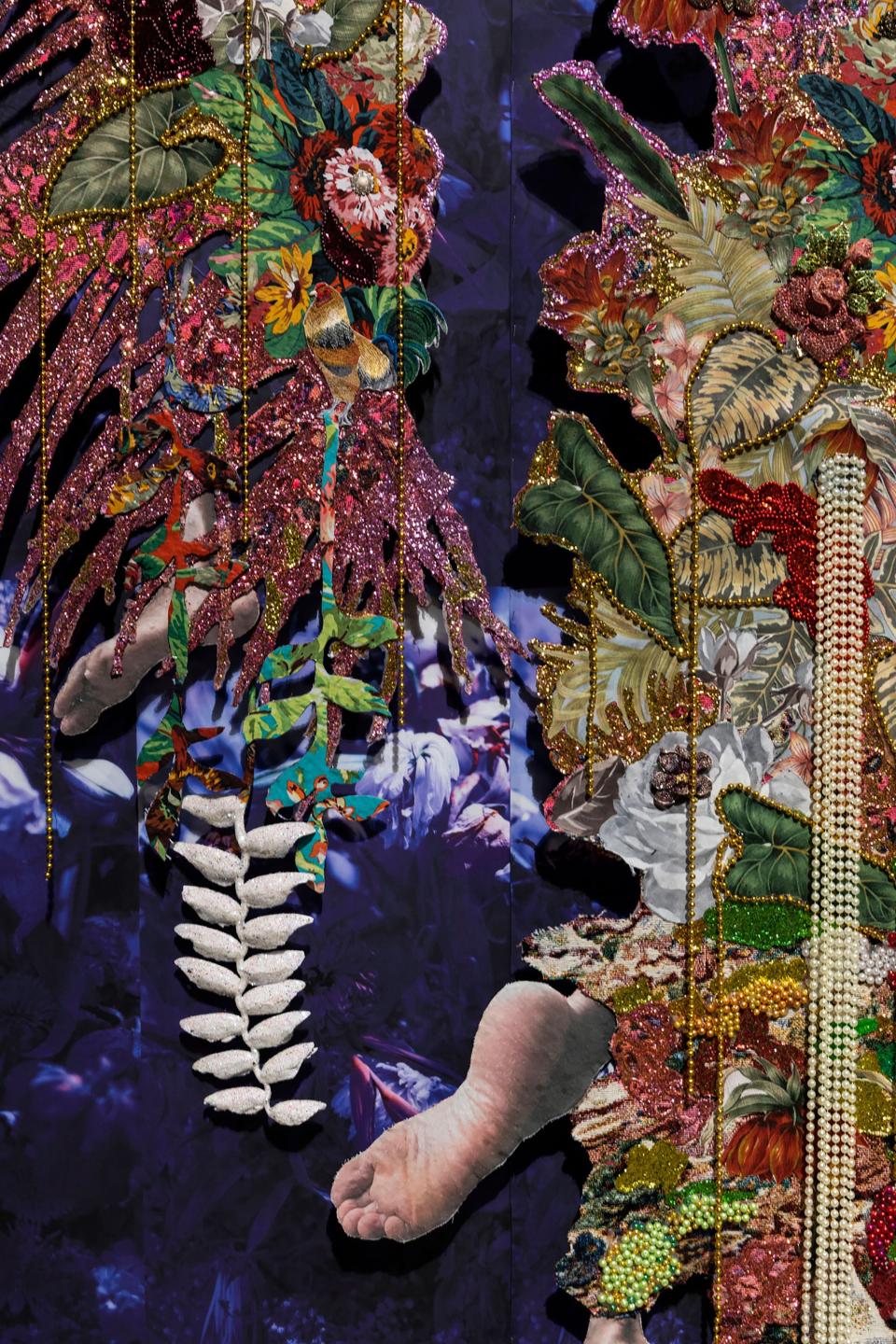
To gather the 756 pairs it took to build her shoe cloud—one of several site-specific new works in the show—Patterson put the call out on social media, asking friends to donate their old shoes. The Jamaican artist, who splits her time between the Caribbean and the States, also trawled the thrift stores of Lexington, Kentucky, where she teaches. “I remember making one trip to Goodwill, and picking up so many shoes that the cashier turned to me and said, ‘Nobody’s ever going to believe that I rung up $300 on one bill,’ ” she says. Like sneakers strung up on phone lines, the resulting piece is a public memorial of sorts, bearing witness to a host of souls unknown and unseen.
“Her work manages to combine two very disparate things—beauty and violence—to deliver a powerful message,” says Christian Louboutin, who decided to underwrite the exhibition after discovering Patterson via his friend, rapper and producer Swizz Beatz. A landscape architect in a former life, Louboutin was initially drawn to the evocative horticultural aspects of Patterson’s art. (Ironically, a pair of Louboutin heels had already made it into the aforementioned shoe cloud, unbeknownst to him.) The tapestry he commissioned her to create for the window of his store in Miami Beach is crammed with exotic flowers and embedded with the words “See Me.”
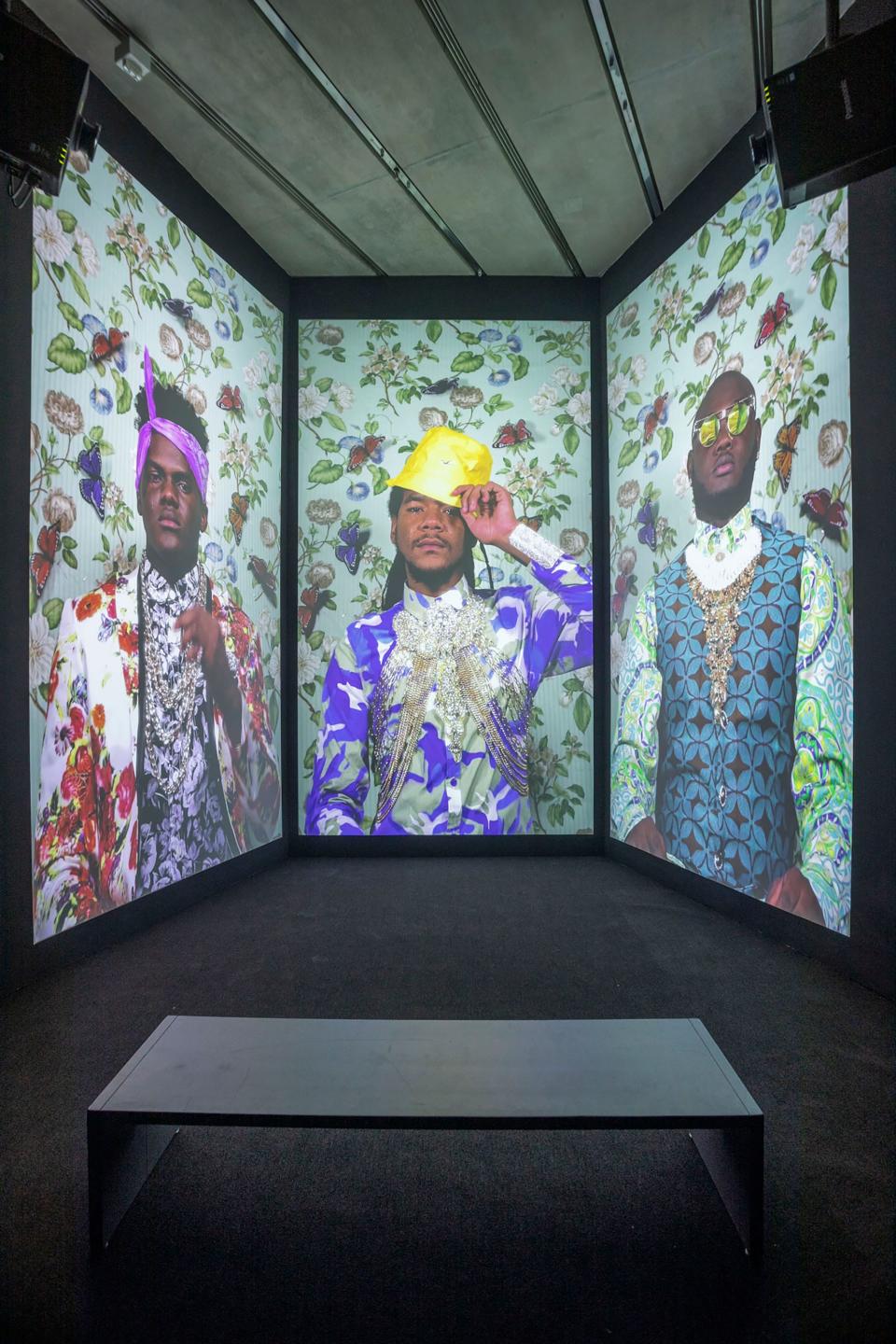
This pointed call to action has been woven into the seams of Patterson’s creative process since the beginning. Growing up in Kingston, Jamaica’s vibrant capital city, the 37-year-old artist first came to understand the self-actualizing power of dress thanks to her mother. “My mother always enjoyed dressing herself. She’s the type of person that if you were to compliment her, tell her ‘You look beautiful,’ she’d say, ‘Tell me something I don’t know,’ ” she says. “And when you think about where black and brown bodies have ended up historically, then style becomes an important way for us to claim our identities. Consider that civil rights leaders would call the suits they wore armor.”

The way in which Patterson dresses herself speaks to that sense of self-assuredness and pride. In her trademark oversize eyeglasses and a disco-inspired jumpsuit from ASOS, she was easily one of the best dressed at the party Beatz and Louboutin cohosted for her last week during Art Basel. So I’m not surprised to hear that she designs all the clothing that appears in her work. “I always say, ‘It all starts with the clothing.’ I spend a lot of time in fabric stores looking for the right textiles. Each piece is custom-made for the model within the tapestry. At that point, the compositions are not totally figured out—that happens over the course of several photo shoots,” says Patterson, who works with Jamaican designer Chris Pablo to bring her ideas to life. “These things are not costumes to me; I prefer to use the word outfits. It’s very important that they resonate in a real way. It’s more about embellishing—essentially gardening—their bodies with the fabric.”

Perhaps the most emotionally charged example of this comes in Three Kings Weep, the video installation that closes the show. Projected onto a trio of floor-to-ceiling screens, the piece opens with three young black men who are stripped to the waist and stood against a backdrop of floral wallpaper and fluttering paper butterflies. With tears streaming down their faces, each man slowly and carefully dresses himself in brightly colored rose prints and graphic patterns. As this sartorial ritual unfolds, the voice of a young boy can be heard reading We Must Die, a poem written by Jamaican-born Harlem Renaissance poet Claude McKay back in 1913.
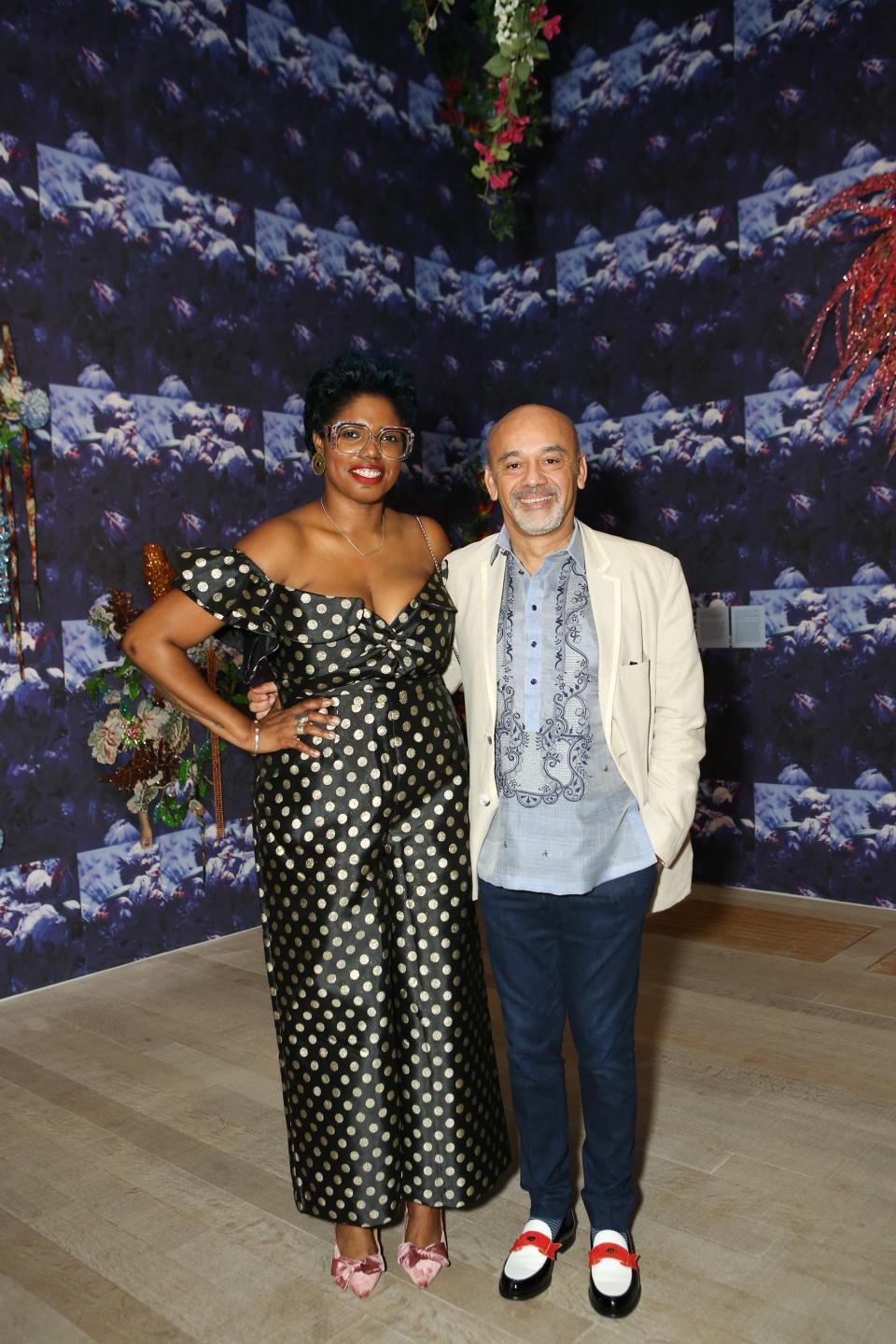
CHRISTIAN LOUBOUTIN AND KASSEEM 'SWIZZ BEATZ' DEAN CELEBRATE ARTIST EBONY G. PATTERSON'S EXHIBITION
“McKay was referencing the upsurge in racial violence that had happened in Chicago. When you think about the resonance it has with the current moment, it’s like things really haven’t changed,” she says. “It’s strategically placed as the last work in the exhibit. You’re left thinking, What does it mean for the black male body to be seen, for its humanity to be seen?” In the final seconds of the video, a moment that’s tinged with defiance and dignity, each man raises his “crown” (a bandana, a bucket hat, and a pair of sunglasses, respectively), a king in his own right.
